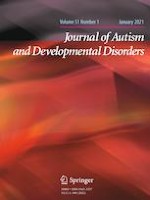14-05-2020 | Original Paper
IQ and Sensory Symptom Severity Best Predict Motor Ability in Children With and Without Autism Spectrum Disorder
Gepubliceerd in: Journal of Autism and Developmental Disorders | Uitgave 1/2021
Log in om toegang te krijgenAbstract
Motor challenges are commonly reported in autism spectrum disorder (ASD). Yet, there is substantial heterogeneity in motor ability within ASD, and it is unknown what behavioral characteristics best explain individual differences in motor ability in ASD and related conditions. This observational study examined motor ability as a function of sensory features, attention deficit/hyperactivity symptoms, ASD symptoms, and IQ in 110 children with ASD, typical development, or an intermediate behavioral profile. While motor challenges were more prevalent in the ASD group compared to other groups, sensory symptom severity and IQ across all individuals best predicted motor performance above-and-beyond group status. Therefore, motor challenges may be best characterized by individual variation in sensory features and cognitive abilities rather than diagnostic group.
